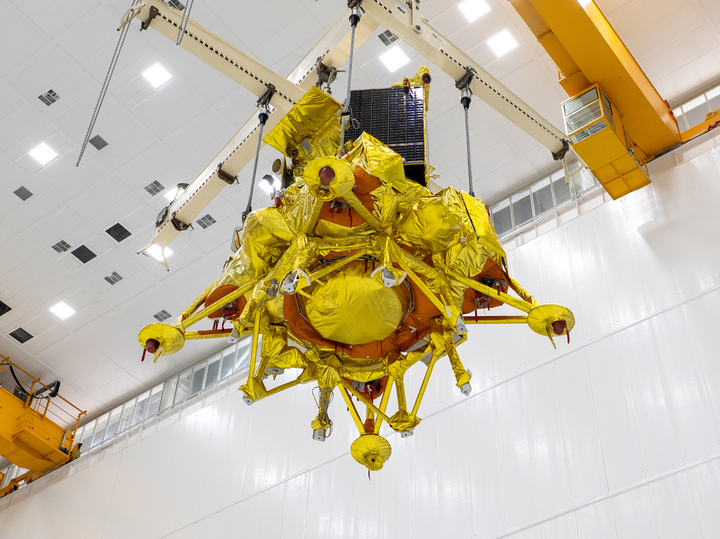“Luna-25” flew two-thirds of the distance to the earth’s satellite
[ad_1]
More than 320 thousand kilometers separate it from the Earth
The automatic interplanetary station “Luna-25” is quietly moving towards its destination – the South Pole of the Moon. Three days have passed since the launch on August 11. Specialists of the NGO Lavochkin and the Space Research Institute of the Russian Academy of Sciences are as restrained as possible in communicating with the media, there is even an unspoken rule: before landing and turning on the station on the surface, no direct interviews. And this is understandable – even though everything is going, thank God, as it should, no one wants to boast ahead of time. There are only official reports from Roskosmos about the current situation. About how the flight is going, what curious facts the press services are still silent about – in the material of the MK observer.
As we already reportedOn August 11, the Soyuz-2.1.b launch vehicle and the Fregat upper stage successfully launched the Luna-25 AMS into orbit from the Vostochny Cosmodrome.
On the way to the terrestrial satellite, two adjustments to its trajectory and testing of scientific equipment were planned.
The first correction was carried out the next day, August 12, at 16:00 Moscow time, using Luna-25’s own engines, which worked for 46 seconds. And on August 14, a message came that the AMS had corrected the trajectory of its flight to the Moon for the second time.
“The propulsion system of the station turned on at 06.40 Moscow time and worked for 24.3 seconds. All Luna-25 systems are functioning normally, communication with the station is stable,” Roscosmos said. This means that on Monday morning Luna 25 covered more than two-thirds of the distance to the natural satellite. At the time of this writing, it was at a distance of more than 320 thousand km from the Earth (despite the fact that the average distance from our planet to the Moon is 380 thousand km).
We will expect the next stage on Wednesday – on the fifth day of the flight, the station, according to the flight plan, should enter the orbit of the Moon with a distance of 100 kilometers from it. To do this, the second cosmic speed with which it is now moving in outer space will need to be “reset” a little. Around the Moon, the station must make several orbits in search of the best moment to descend.
Despite the fact that Luna-25 has several cameras, an orbital image of the Moon on approach to it is planned only once. Then, if all goes well, another panoramic shot will be taken on the surface, after a soft landing. According to the plan, this should happen on August 21 – we keep our fists for our station, as they say.

According to preliminary calculations of specialists, the device is planned to land in the vicinity of the South Pole of the Moon at a point corresponding to 69 degrees south latitude and 40 degrees east longitude, north of the Boguslavsky crater. Recall that in a successful scenario, the Russian station will land on the moon for the first time in the polar region. This will be a very crucial moment, because you need to get to a point on the terrain where the slope will not exceed 15%, and the sunlight there will be at least 40% of the lunar day (recall that a day on the Moon lasts about two Earth weeks).
As we have already reported, the Indian apparatus Chandrayaan-3, which is already in lunar orbit, is also currently on its way to the lunar South Pole. It flies along a longer trajectory, so it will land on the moon at about the same time as our Luna-25, maybe even two days later. Both devices should land approximately 10 degrees east from each other.
Among the main goals of the mission, experts distinguish, first of all, a soft landing on the surface of our satellite, the second is the analysis of the soil to determine the amount of water and other components in it, the third is the study of the lunar exosphere and charged dusty plasma, which covers almost the entire surface of the satellite and can unfavorably say on the work of space technology.
Help “MK”. The information that the polar regolith on the Moon contains quite a lot of water and other elements that were brought to our satellite by comets was obtained by scientists in 2008 with the help of the Russian LEND neutron telescope installed on the American lunar orbiter LRO (Lunar Reconnaissance Orbiter LRO) .
If the mass fraction of frozen water in the regolith turns out to be large, this will be an additional argument for equipping the Moon in the future for a manned expedition – it will not need to take large supplies of the necessary liquid with it.
[ad_2]
Source link








